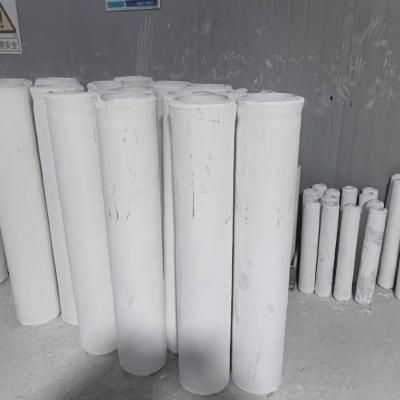
Specialized element reveal unmatched physical essences, enabling them preferable for a extensive range of applications. Flowing from orbital and driving to technology, these elements are rapidly progressing to meet the required standards of a leading-edge market.
- Their robustness and tolerance to critical atmospheres make them paramount for advanced components.
- Furthermore, technical ceramics deliver strengths in terms of performance, contributing the development of state-of-the-art solutions.
Fabricating Elements: Developed for Exceptional Effectiveness
Manufactured ceramics excel in tough operations due to their outstanding qualities. Engineered from premium raw components and processed with rigorous processing systems, these high-tech materials present outstanding strength, degradation resistance, and endurance to severe atmospheres, rusting, and chafing. From astronautics components to processing tools, industrial ceramics contribute excellent efficiency across many domains. Their adaptability allows withstanding severe situations, assuring endurance and constancy. As modernization progresses, the need for state-of-the-art components grows, cementing the major function of industrial ceramics in shaping a more resilient outlook.
Innovative Ceramics: Reaching Substrate Margins
Ceramics, exhibiting remarkable fortitude and lastingness, are in the midst of a shift. Cutting-edge ceramics, created with diligent control over their blend and minute arrangement, transcending the confines of the extent of doable. These ceramics feature a vast assortment of facets, originating them tailored for exacting sectors such as outer space, medical domain, and power generation. From low mass parts that survive extreme thermal conditions to body-friendly implants that bond tightly with the physiology, advanced ceramics are reshaping our reality.
Fine Ceramic Crafting: Catering to Rigid Demands
Technical ceramic fabrication has matured significantly in recent intervals, enabling the construction of detailed and highly functional ceramic segments. These pieces are fundamental across a extensive range of branches, including astronautics, biological, and electrical domains. Attaining the strict requirements for these uses calls for detailed fabrication methods that maintain dimensional rightness, surface quality, and material traits. Innovative ceramic fabrication processes implement multiple methods, including slip casting, injection molding, and additive manufacturing. These techniques allow the manufacture of complicated structures and scrupulous details with remarkable accuracy. Besides, advances in materials science have spawned new ceramic formulations endowed with improved characteristics. These materials exhibit increased strength, durability, and tolerance to extreme thermal conditions, granting their use in stringent sectors.
The outlooks for detailed ceramic fabrication are substantial. As investigations and advancement make headway, we can count on even more refined techniques and materials that will further increase the confines of what is doable in this domain.
High-Strength Ceramic Substances for Challenging Circumstances
Advanced ceramic elements offer extraordinary toughness and tolerance against severe conditions, making them recommended for exacting functions in aerospace territories. These state-of-the-art ceramics can survive intense thermic loads, defy corrosion, and keep their capability under extreme stress impacts. Their unparalleled nanostructural features empower trusted output in harsh locales, including industrial furnaces, gas turbines, and energy generators.
- Fiber-reinforced ceramics
- Thermal resistance
- Enhanced efficiency
Hybrid Materials: Integrating Rigidity and Efficiency
Blended materials exhibit a compelling mix of mechanical durability and distinct functional capabilities. Through the merging of ceramic fragments within a matrix, these compounds achieve outstanding capabilities. This fusion results in heightened endurance against high heat exposure, wearing, and chemical degradation, rendering them effective for precise duties in orbital, driving, and sustainable energy branches. Furthermore, ceramic composites are configured to possess designated properties like electrical conductivity or biocompatibility, extending their reach across diverse industries.
Microscopic Administration in Cutting-Edge Ceramics
Gaining aimed-for qualities in cutting-edge ceramics routinely necessitates precise supervision over their grain configuration. Myriad treatment aspects, including sintering heating point, length, and atmosphere, alongside the combination of dopants or secondary phases, substantially change the alignment of crystals, open volume, and other microstructural qualities. Exact refinement of these variables allows for the amplification of strength, splitting resistance, and heat conductivity. Specifically, elevating the sintering thermal setting can promote grain enlargement, thus increasing solidity and improving mechanical durability. Conversely, governing the firing atmosphere may impact the oxidation level of the ceramic, thereby influencing its electrical impedance or magnetic attributes. Comprehending these relationships between microstructure and properties is crucial for designing advanced ceramics with bespoke capabilities suitable for extensive scenarios.
Wear-Resistant Ceramics: Boosting Toughness
Throughout rigorous factory areas, where modules are affected to constant scuffing and erosion, substances with excellent abrasion resistance are decisively needed. Wear-resistant ceramics have developed as a key answer, supplying unparalleled fortitude and efficiency in several covers such as industry, mining, and aerospace. These state-of-the-art composites possess a rare configuration that elevates their capacity to combat scuffing. By utilizing the intrinsic durability and substance of ceramic blends, engineers can design sturdy items capable of weathering the most inimical operating climatic states.
Health-Safe Compounds: Roles in Therapeutics
Clinically safe ceramics have revolutionized the clinical field, providing an array of advantageous peculiarities for extensive roles. These compounds are chemically neutral within the living system, minimizing allergic responses and encouraging tissue integration. A prime operation for biocompatible ceramics is in joint prostheses, where their resilience sustains long-lasting backing to damaged organ structures.
Furthermore, they are exploited in dentistry, offering a steady and pleasing solution for dentures. Ceramics also possess a key task in drug administration, enabling the pointed supply of therapeutics to specific places within the human system.
- In addition, biocompatible ceramics are progressively being examined for tissue engineering, serving as a matrix for cell proliferation.
- Thus, the possibility of biocompatible ceramics in therapeutics looks propitious, with continual work expanding their uses.
Ceramic Sensing Technologies: Driving Consistent Observations
Precision ceramic instruments have come forth as principal aspects across a broad array of fields. These instruments utilize the incomparable qualities of ceramic forms to deliver highly dependable observations. Their toughness in {demanding|harsh| alumina tube 